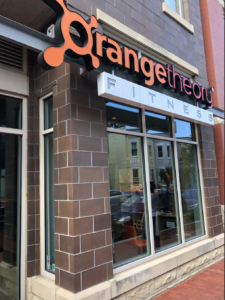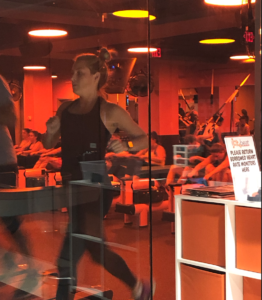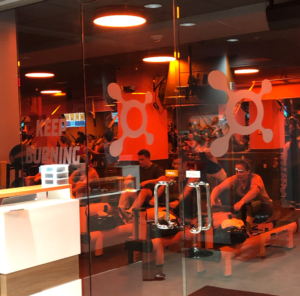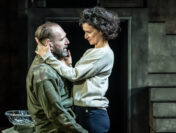Real talk: I was set to hate on Orange Theory Fitness (OTF). Enthusiasts seemed too… enthusiastic (bordering on cult-y/CrossFit) and the studio seemed to take itself way too seriously. I got not one, but 5 (!!) reminders to show up 30 minutes early to receive the heart rate monitor I would wear for the workout and be “trained” on my first class. Militant much?! (I was assured by staff that this is not normal, though other first-timers I asked told me otherwise.)
I expected a serious workout, so I was less nervous and more ruffled about trying OTF for the first time. But did taking a class change my mind? Read on to find out!
 Like just about everywhere these days — as much as we hate it — fitness studios are packing ‘em in by using alternating rotations on the equipment and floor exercises. OTF does it, too. Some super packed OTF classes are now doing three rotations (ack!) so if you are easily flustered with this set-up, be warned. That said, OTF instructors seem to be better than most at explaining the rotation exercises in advance, and the floor exercises were illustrated on a screen, so we didn’t find it too daunting to take it at our own pace.
Like just about everywhere these days — as much as we hate it — fitness studios are packing ‘em in by using alternating rotations on the equipment and floor exercises. OTF does it, too. Some super packed OTF classes are now doing three rotations (ack!) so if you are easily flustered with this set-up, be warned. That said, OTF instructors seem to be better than most at explaining the rotation exercises in advance, and the floor exercises were illustrated on a screen, so we didn’t find it too daunting to take it at our own pace.
An Orange Theory workout will consist of time spent on a treadmill, rower (or stationary bike), and using weights or floor exercises for strength training. Hate the treadmill? This may not be the workout for you as you should expect to spend about half the class running, jogging or speed walking inclines. Is this effective cardio? Yes. Does the use of treadmills mean you’ll leave feeling like you’ve had a full-body workout? YES.
No two workouts are alike, so there is no routine, but this is how it went in the class we experienced: (Participants could choose in advance whether to start out on the rowers or treadmills; we started on rowers.) After a five minute rowing warm-up, we moved to the floor where we did a series of five exercises including variations on squats, push-ups, sit-ups, lateral slides (skaters), and mountain climbers with intervals back on the rowing machines in between each series. The coach called for (surprise!) burpees several times in the midst of this. After moving to the treadmill, we completed a series of endurance runs with speed walking incline “breaks” in between.
 You set your own pace, but that screen in front of the treadmills sharing your workout stats is certainly a major motivator. (Remember that heart rate monitor from the pre-class “training” session?)
You set your own pace, but that screen in front of the treadmills sharing your workout stats is certainly a major motivator. (Remember that heart rate monitor from the pre-class “training” session?)
The actual “Orange Theory” uses the science of heart rate monitoring to determine your oxygenation rate. Zone 3 – green – is challenging, but doable; Zone 4 – orange – is uncomfortable; and Zone 5 – red – is all out effort. Ideally, you want to spend most of your time in the orange zone, thus “Orange Theory.”
At the end of the workout and stretching (so important!), participants receive a workout summary with their personal results: calories burned, steps taken, and minutes spent in each heart rate zone. This way you know both how you feel you did and how your heart and body actually know you did. 
More affordable than some of the newer boutique studios, OTF classes are $30 (discounts for multiple class packs). OTF also offers local residents their first class free at most studio locations. And with almost 50 studios in the DC area (10 within DC), it’s actually easy to find a convenient one nearby.
We didn’t want to love it, but after our free trial, we have to admit, we’re looking forward to going back for more.
Overall score: 5 stars



![[Vid] A Sneak Peek Inside the New Sixty Vines Foggy Bottom](http://kstreetmagazine.com/wp-content/uploads/2024/04/SV_Wine-176x133.jpg)
